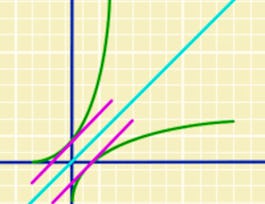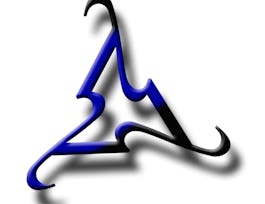Learn how to think the way mathematicians do – a powerful cognitive process developed over thousands of years.


Introduction to Mathematical Thinking
Taught in English
Some content may not be translated
482,383 already enrolled
Course
Gain insight into a topic and learn the fundamentals

Instructor: Dr. Keith Devlin
Top Instructor
(2,657 reviews)
Skills you'll gain
Details to know

Add to your LinkedIn profile
11 quizzes
See how employees at top companies are mastering in-demand skills


Earn a career certificate
Add this credential to your LinkedIn profile, resume, or CV
Share it on social media and in your performance review

There are 9 modules in this course
START with the Welcome lecture. It explains what this course is about. (It comes with a short Background Reading assignment, to read before you start the course, and a Reading Supplement on Set Theory for use later in the course, both in downloadable PDF format.) This initial orientation lecture is important, since this course is probably not like any math course you have taken before – even if in places it might look like one! AFTER THAT, Lecture 1 prepares the groundwork for the course; then in Lecture 2 we dive into the first topic. This may all look like easy stuff, but tens of thousands of former students found they had trouble later by skipping through Week 1 too quickly! Be warned. If possible, form or join a study group and discuss everything with them. BY THE WAY, the time estimates for watching the video lectures are machine generated, based on the video length. Expect to spend a lot longer going through the lectures sufficiently well to understand the material. The time estimates for completing the weekly Problem Sets (Quiz format) are a bit more reliable, but even they are just a guideline. You may find yourself taking a lot longer.
What's included
6 videos1 quiz
In Week 2 we continue our discussion of formalized parts of language for use in mathematics. By now you should have familiarized yourself with the basic structure of the course: 1. Watch the first lecture and answer the in-lecture quizzes; tackle each of the problems in the associated Assignment sheet; THEN watch the tutorial video for the Assignment sheet. 2. REPEAT sequence for the second lecture. 3. THEN do the Problem Set, after which you can view the Problem Set tutorial. REMEMBER, the time estimates for watching the video lectures are machine generated, based on the video length. Expect to spend a lot longer going through the lectures sufficiently well to understand the material. The time estimates for completing the weekly Problem Sets (Quiz format) are a bit more reliable, but even they are just a guideline. You may find yourself taking a lot longer.
What's included
6 videos1 quiz
This week we continue our analysis of language for use in mathematics. Remember, while the parts of language we are focusing have particular importance in mathematics, our main interest is in the analytic process itself: How do we formalize concepts from everyday life? Because the topics become more challenging, starting this week we have just one basic lecture cycle (Lecture -> Assignment -> Tutorial -> Problem Set -> Tutorial) each week. If you have not yet found one or more people to work with, please try to do so. It is so easy to misunderstand this material.
What's included
4 videos1 quiz
This week we complete our analysis of language, putting into place the linguistic apparatus that enabled, mathematicians in the 19th Century to develop a formal mathematical treatment of infinity, thereby finally putting Calculus onto a firm footing, three hundred years after its invention. (You do not need to know calculus for this course.) It is all about being precise and unambiguous. (But only where it counts. We are trying to extend our fruitfully-flexible human language and reasoning, not replace them with a rule-based straightjacket!)
What's included
4 videos1 quiz
This week we take our first look at mathematical proofs, the bedrock of modern mathematics.
What's included
4 videos1 quiz
This week we complete our brief look at mathematical proofs
What's included
4 videos1 quiz
The topic this week is the branch of mathematics known as Number Theory. Number Theory, which goes back to the Ancient Greek mathematicians, is a hugely important subject within mathematics, having ramifications throughout mathematics, in physics, and in some of today's most important technologies. In this course, however, we consider only some very elementary parts of the subject, using them primarily to illustrate mathematical thinking.
What's included
4 videos1 quiz
In this final week of instruction, we look at the beginnings of the important subject known as Real Analysis, where we closely examine the real number system and develop a rigorous foundation for calculus. This is where we really benefit from our earlier analysis of language. University math majors generally regard Real Analysis as extremely difficult, but most of the problems they encounter in the early days stem from not having made a prior study of language use, as we have here.
What's included
5 videos1 quiz
Test Flight provides an opportunity to experience an important aspect of "being a mathematician": evaluating real mathematical arguments produced by others. There are three stages. It is important to do them in order, and to not miss any steps. STAGE 1: You complete the Test Flight Problem Set (available as a downloadable PDF with the introductory video), entering your solutions in the Peer Evaluation module. STAGE 2: You complete three Evaluation Exercises, where you evaluate solutions to the Problem Set specially designed to highlight different kinds of errors. The format is just like the weekly Problem Sets, with machine grading. You should view the Tutorial video for each Exercise after you submit your solutions, but BEFORE you start the next Exercise. STAGE 3: You evaluate three Problem Set solutions submitted by other students. (This process is anonymous.) This final stage takes place in the Peer Evaluation module. After you are done peer reviewing, you may want to evaluate your own solution. It can be very informative to see how you rate your own attempt after looking at the work of others.
What's included
4 videos3 quizzes1 peer review
Instructor

Offered by
Recommended if you're interested in Math and Logic

University of North Texas

The University of Sydney

Birla Institute of Technology & Science, Pilani

Stanford University
Why people choose Coursera for their career




Learner reviews
Showing 3 of 2657
2,657 reviews
- 5 stars
84.44%
- 4 stars
12.47%
- 3 stars
1.57%
- 2 stars
0.45%
- 1 star
1.05%

Open new doors with Coursera Plus
Unlimited access to 7,000+ world-class courses, hands-on projects, and job-ready certificate programs - all included in your subscription
Advance your career with an online degree
Earn a degree from world-class universities - 100% online
Join over 3,400 global companies that choose Coursera for Business
Upskill your employees to excel in the digital economy
Frequently asked questions
Since the focus is to acquire a new way of thinking (as opposed to getting right answers), the passing grade for the weekly Problem Sets is 35%, and for the Test Flight Problem Sets 30%. Basically, this means that if you stick with the course and complete all the work diligently, you should get a passing grade.
Access to lectures and assignments depends on your type of enrollment. If you take a course in audit mode, you will be able to see most course materials for free. To access graded assignments and to earn a Certificate, you will need to purchase the Certificate experience, during or after your audit. If you don't see the audit option:
The course may not offer an audit option. You can try a Free Trial instead, or apply for Financial Aid.
The course may offer 'Full Course, No Certificate' instead. This option lets you see all course materials, submit required assessments, and get a final grade. This also means that you will not be able to purchase a Certificate experience.
When you purchase a Certificate you get access to all course materials, including graded assignments. Upon completing the course, your electronic Certificate will be added to your Accomplishments page - from there, you can print your Certificate or add it to your LinkedIn profile. If you only want to read and view the course content, you can audit the course for free.

